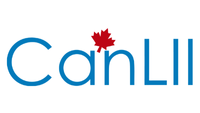 If you’re producing a reference document of some sort, whether it’s professional documentation, a product manual or collective agreements, you’re most likely making it available to your stakeholders in PDF format.You know you could do better, but you have stuck to PDF until now because a portion of your user base consistently tells you they want to print your manual. PDF is great for printing, let’s give it that. Unfortunately it’s bad at almost everything else.Here are a few reasons why you should start thinking about moving from plain PDF files to a more robust publishing solution:
If you’re producing a reference document of some sort, whether it’s professional documentation, a product manual or collective agreements, you’re most likely making it available to your stakeholders in PDF format.You know you could do better, but you have stuck to PDF until now because a portion of your user base consistently tells you they want to print your manual. PDF is great for printing, let’s give it that. Unfortunately it’s bad at almost everything else.Here are a few reasons why you should start thinking about moving from plain PDF files to a more robust publishing solution:
- Download time: If your document is heavy enough for users to notice the download time of the PDF file, it’s time you move on. We all experienced waiting for some PDF downloads on our phones. After one, two, three seconds … we jump to the next site (or start cursing if it’s not an option). I don’t have to emphasize this, you know it’s true.
- Poor navigation: PDFs are very linear files assembled so that your users can easily read them from top to bottom. That’s fine for a novel, but an obstacle for reference material used on and off to solve day-to-day problems. This type of content requires multiple points of entry, such as links at the section level. In addition, today’s world requires responsive design adapting to any screen size, which PDF doesn’t do.
- Poor search: Doing a CTL-F (or Command F on Mac) in a PDF file will only return exact matches for every character, sorted in the document order. In the Google era users expect snippets, results including derivatives, and the most relevant hits to be presented at the top of the list. This is especially important when searching a very specific answer in the body of a complex reference work.
- Absence of collaboration: Have you ever been sent a PDF file by a colleague for review? Sigh… What can you do with that? What about taking notes directly in the body of the document, sharing some with your colleague, some others with your boss, without duplicating the original file? Your stakeholders expect to be able to build on top of your content without creating a mess.
- Poor versioning: Updating a PDF file generates a new PDF file of equal standing. Users needing to navigate past versions are expected to close one before opening the other, without any context. Wouldn’t they prefer having the option to specify a range of versions when conducting a search? Wouldn’t they like keeping their personal notes across versions?
- Difficulty to reuse content: Content embedded in PDF files is difficult to copy/paste into other applications. It’s also difficult to share on social media. All of this constitute barriers to any network effectyou should expect from the content you are producing. In fact PDF usability is so bad that continuing to rely on it is a sure path to becoming irrelevant.
- Loss of recurring traffic: When users download the PDF version of your manual and save it on their own desktops, they’re not coming back to your website. They won’t see your newest announcements, won’t have the opportunity to buy add-ons or complementary services, and won’t brag about it on social media. Since your existing user base is much easier to convert than any new prospect, you are loosing opportunities.
Now if you think about it, users requesting easy printing are probably motivated by those limitations in the first place (well, ok… they probably don’t care about the last one). For those under the permanent impression that using complex technical manuals in electronic format is a pain, printing will always remain the best option. This is a vicious circle that somebody is bound to break at some point. And if you are not the one doing it, your competitors may very well do it.
To be entirely truthful, PDF brings another big benefit: its easy to create. The fact that you can generate PDF files with only one click from your favourite application makes your life easier. Replacing that simple approach by complex authoring technology enabling you to tag and structure content at the deepest level would not be fun. It would put much more work on your shoulders. Added benefits for your users maybe, but definitely much more work on your shoulders.
Fortunately we are past that. It’s now possible to rip all of the benefits of an advanced publishing solution without changing how you draft. As a mater of facts Lexum approach has always been to process original files as they are provided by clients, without imposing any standards or templates. Building on that experience Qweri enables our clients to self-publish complex text-heavy documents in a worry-free online environment providing all of the bells and whistles lacking in PDF files. No tagging is required, and you don’t have to break your manuals into tiny bits of data.
If you feel it’s time to move your manuals beyond PDF but don’t want to increase your workload doing so, I suggest you get in touch with Lexum. You’ll be surprised at how easy it is.







